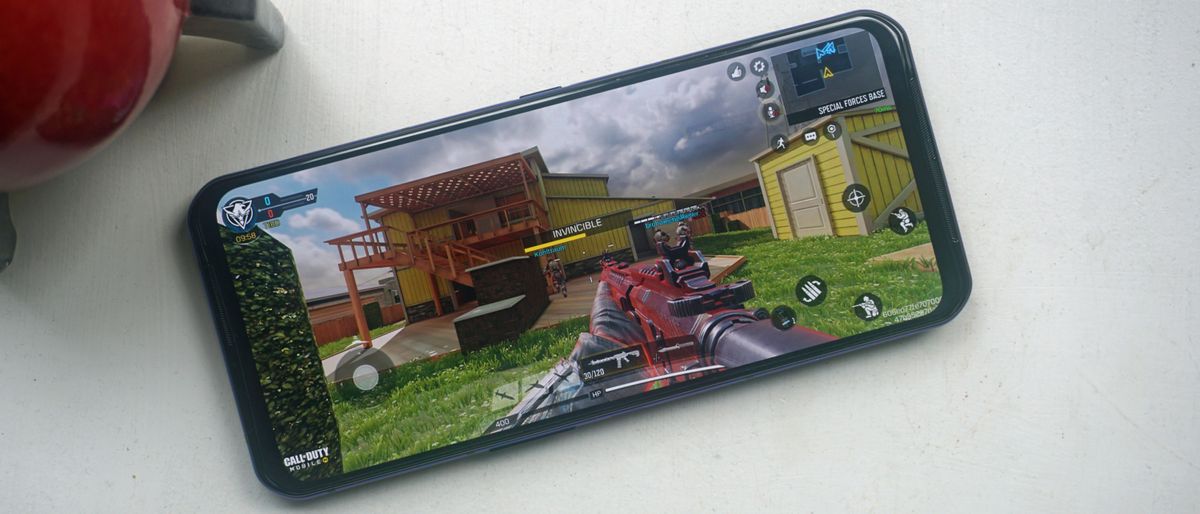Early Verdict
The Lenovo Legion Phone 2 won’t be for everyone, but if you’re looking for a top-end gaming phone that can offer the best experience when playing multiplayer games, you may have found a new contender for your next smartphone.
Pros
- +
Top-end spec
- +
Interesting cooling system
Cons
- -
Thick and bulky
- -
High price
Why you can trust TechRadar
Over the last few years, gaming smartphones have become a major trend for a variety of manufacturers such as Xiaomi and Asus. You may not expect Lenovo to be a name in that mix, but the company made the Lenovo Legion Phone Duel that we called the best gaming phone of 2020.
The Legion Phone Duel 2 is unsurprisingly a direct sequel to last year's gaming phone, and it builds on the unique design the company introduced with some top-end specs and a variety of other improvements.
This isn't a smartphone for everybody - it features a pop-up selfie camera, two charging ports, a dedicated gaming cooling system and mappable buttons for gaming sessions.
But if you're after a smartphone that is designed for sessions of PUBG Mobile or any other popular multiplayer game you may find this is the right handset for you.
Lenovo Legion Phone 2 release date and price

The Lenovo Legion Phone 2 doesn’t yet have a specific release date, but the company has said it’ll be coming to those in Europe at some point in May. We believe that will be the case for those in the UK, but Lenovo has yet to specify that.
We’ve yet to hear if the phone will be available in the US or Australia, but we’ll update this hands-on review when we hear more.
In the UK, the handset is set to start at £699 (about $950 / AU$1,250) for a model with 12GB of RAM and 256GB of storage. If you opt for the largest variant - that’s 16GB of RAM and 512GB of storage - you’ll also get a charging dock with it for £899 (about $1,250 / AU$1,600).
Design and display
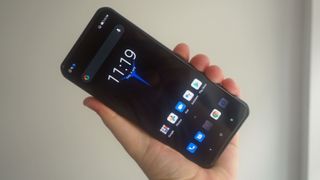
The Lenovo Legion Phone 2 is built for gamers, and that likely means it won’t be for you unless you plan to use your handset in landscape orientation, and you want one of the main purposes of your handset to be playing games.
This is a thick design with the thinnest points measuring 9.9mm and the thickest part measuring 12.56mm. The phone is also heavy at 259g, and it’s clearly designed to be used in a landscape format.
That’s because the rear of the phone has idents to place your fingers on the rear of the handset. This isn’t as comfortable as using a controller, but it’s not too far off and it's one of the best attempts we've seen at getting close to not needing an extra accessory.
The idents also include mappable controls, which we’ve seen previously on the company’s Lenovo Legion Phone, though there are eight here instead of just two. We’ve yet to map these in for any of our gaming, so we’ll be sure to report back on these at the time of our full review.
You're getting a huge 6.92-inch display here with a resolution of 1080 x 2460 and a refresh rate of 144Hz. It also features 720Hz touch sampling rate, which is a must-have on recent gaming phones.
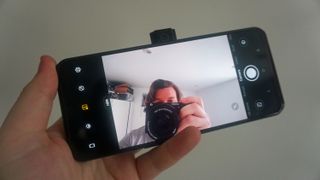
In our limited experience so far, the phone's display looks bright and crisp. It's particularly useful for gaming as there isn't a cut-out for a selfie camera, and instead there's a pop-up selfie camera sitting along the right hand edge of the phone.
That means you'll be taking your selfies with the phone in landscape, and you can activate this by booting up the camera in the app. You can then either close the app, or you can press on the power button atop the camera to make it close.
Specs and gaming
The Lenovo Legion Phone 2 comes with a Qualcomm Snapdragon 888 chipset inside, which is the fastest processor currently available on Android phones.
In our limited gaming so far - we’ve not had the handset long - we found the processor was able to load up matches as quickly as any other flagship phone we’ve used, and graphically it has looked impressive so far.
There's a specifically designed twin turbo-fan cooling system built into the Legion Phone Duel 2, and the aim here is to ensure your phone won't overheat while you're playing games. We'll be sure to put this through its paces in our full review.
We’re using the variant with 16GB of RAM, so you may notice a slight drop in quality if you used the 12GB option but we think it's unlikely to dramatically change the experience you'll have.
This phone is also 5G-ready, so if you've got a compatible network or carrier you'll be able to connect to the fastest internet too.
Camera and battery
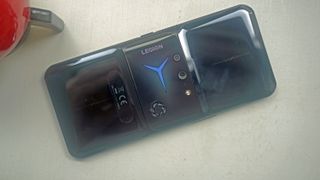
We’ve yet to properly dive into what the camera on this handset can do, but its spec is remarkably similar to the last-gen phone that we found to be suitable for most people.
There is a 64MP main camera and a 16MP ultra-wide, while the phone's front-facing selfie camera is a 44MP camera. That front camera is designed to work well for streaming, so it's capable of video recording up to 4K at both 30 and 60 frames per second.
The Legion Phone Duel 2 features a 5,500mAh battery, which is a touch bigger than the last-gen phone. We're hoping that means this phone will be capable of lasting around two days from a single charge.
It also features up to 90W fast-charging - but you'll need a separate charger for that - or 65W fast-charging with the charger included in the box. The battery is split into two to help with fast-charging, but this means you need to use both ports to power it up.
Lenovo has also included two ports for charging - one sits on the left hand edge of the device, and the other is along the bottom edge. The aim here is so you'll be able to recharge your phone even when you're playing in a landscape orientation.
Early verdict
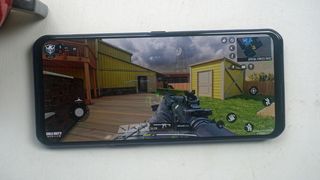
The Lenovo Legion Phone 2 isn’t for everyone, and it has a high price compared to some other gaming phones on the market but it looks to like it offers absolute top-end spec.
Whether that translates into the best gaming phone experience we’ve had remains to be seen, but we’ll be sure to make that judgement when it comes to our full review of the phone.
James is the Editor-in-Chief at Android Police. Previously, he was Senior Phones Editor for TechRadar, and he has covered smartphones and the mobile space for the best part of a decade bringing you news on all the big announcements from top manufacturers making mobile phones and other portable gadgets. James is often testing out and reviewing the latest and greatest mobile phones, smartwatches, tablets, virtual reality headsets, fitness trackers and more. He once fell over.
What is a hands on review?
Hands on reviews' are a journalist's first impressions of a piece of kit based on spending some time with it. It may be just a few moments, or a few hours. The important thing is we have been able to play with it ourselves and can give you some sense of what it's like to use, even if it's only an embryonic view. For more information, see TechRadar's Reviews Guarantee.

Mine's bigger than yours: Mysterious hyperscaler plans to build Europe's largest cloud and AI data center that will suck enough electricity to power 20,000 homes

How to watch the Grammys 2025 online: live stream awards ceremony and performances from anywhere

NYT Strands today — my hints, answers and spangram for Sunday, February 2 (game #336)
Most Popular



